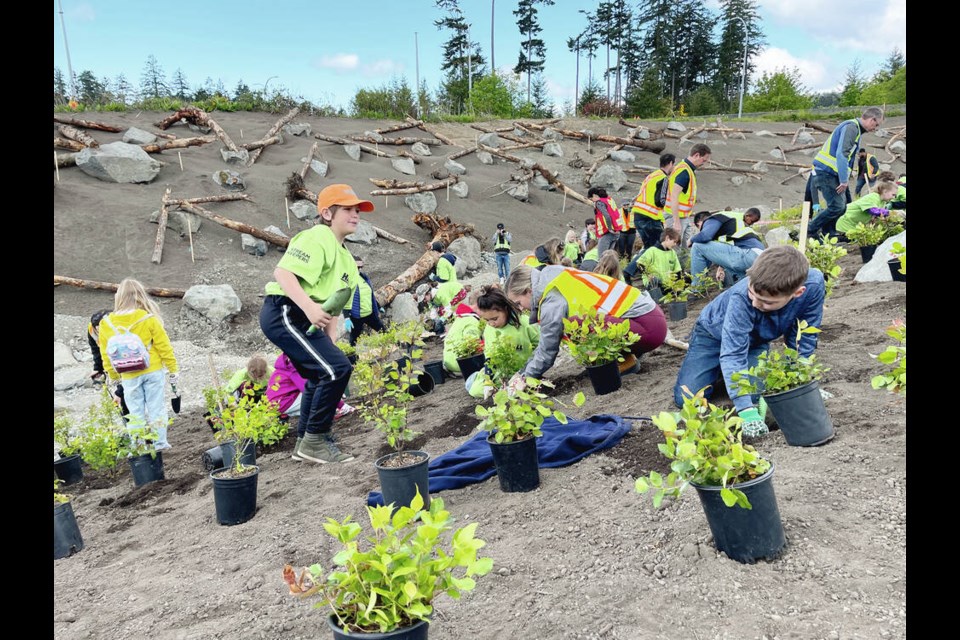B.C. Transit has been recognized for its efforts to restore stream habitat on the site of its new HandyDART facility in View Royal, set to be operational in 2024.
The seasonal streams that flowed across the former industrial property and joined Craigflower Creek have been aligned into one and turned into healthy salmon, wildlife and plant habitat, drawing kudos from the Fraser Basin Council, a non-profit group that promotes land and water management in restoring areas for Pacific salmon.
The group’s recognition of the facility at Burnside Road West and Watkiss Way as a Safe Salmon Site is a first for Vancouver Island.
B.C. Transit said when the Island Highway was built in the 1990s, a large amount of fill was placed on the site, including within the riparian zone of the seasonal stream. The stream has been moved at least once, possibly twice, in the last century.
The stream flow was largely made up of stormwater from upstream roads and buildings. Water flow was variable, and the stream would go dry in summer. The riparian zone was overgrown with weeds, blackberries and other invasive species, providing little habitat value.
Under B.C. Transit’s plan, the fill that was dumped on the site was removed and nine new rain gardens covering a third of an acre were built to retain runoff during rainstorms. A storage detention tank and system will be installed for extreme storms, with a valve allowing emergency shutoff to the creek in the event of a spill.
A new sediment trap at the top of the stream will remove sediment and pollutants running off the buildings and roads, providing cleaner water to Craigflower Creek. Water quality will be monitored, and data provided to local stream keepers and agencies.
The realigned stream has riffles and pools, as well as purposely placed rocks, logs and weirs that break up the water flow, introduce oxygen to the water and reduce stream-bank erosion.
It connects back to Craigflower Creek through a gentle transition area to allow the new stream to access its floodplain during periods of high rainfall and provide new amphibian habitat and potential rearing habitat for coho salmon and other juvenile fish.
Aaron Lamb, Transit’s chief sustainability officer and vice-president of asset management, said the company has worked with local stream keepers and nearby residents for months on the project. Students at Eagleview Elementary helped plant some of the first native shrubs last May.
Lamb said it’s the “most significant” environmental restoration project in the Craigflower Creek Watershed.
“This is a great example of how we can partner with the community to leave something in better shape than we found it through redevelopment.”
Theresa Fresco, program manager with the Fraser Basin Council, said B.C. Transit has shown care and leadership to improve the ecology of a previously degraded industrial site, adopt sound water management practices and restore a stream and riparian areas.



